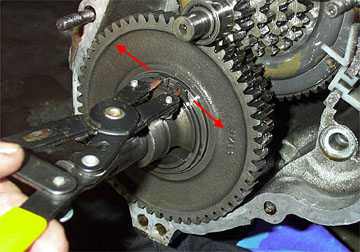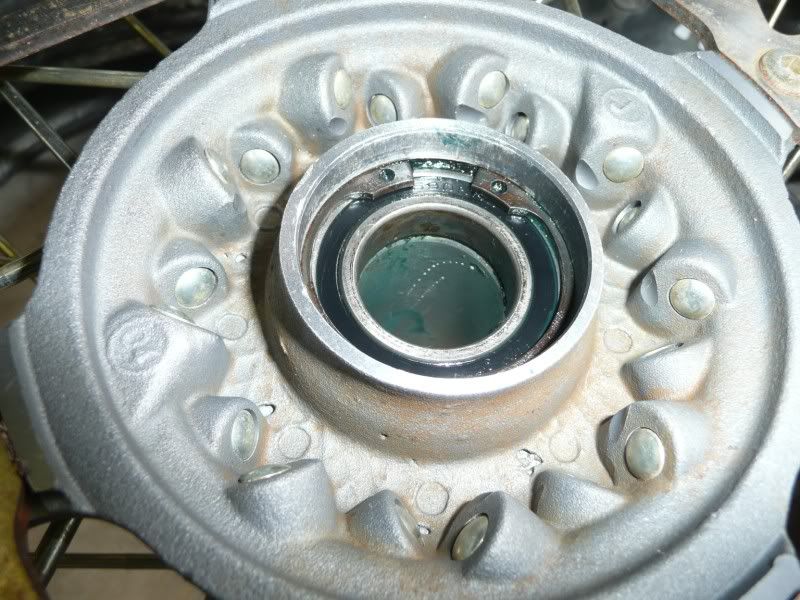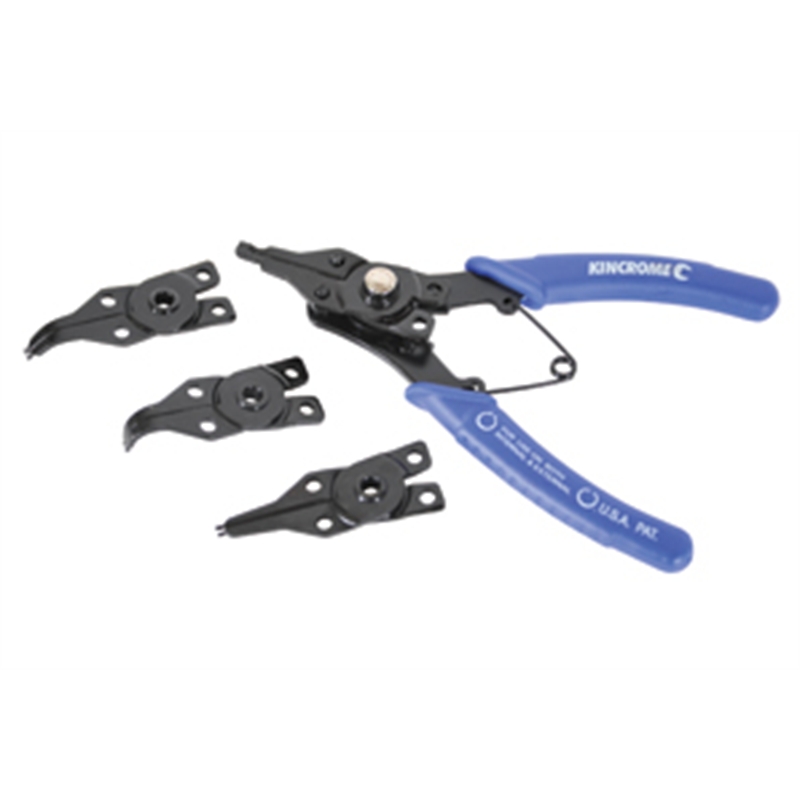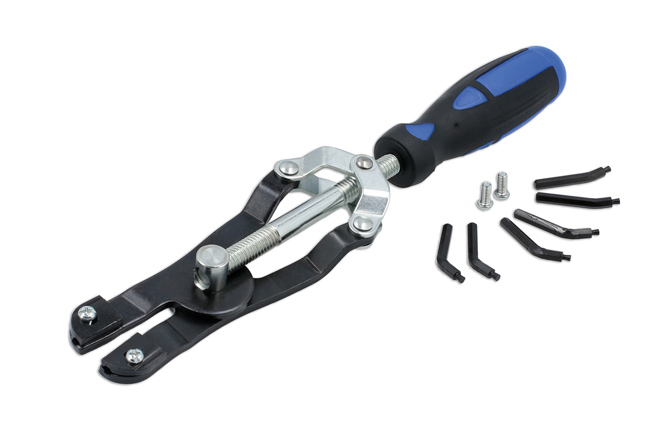Circlip pliers.
A person, You know who you are, recommended I get some circlip pliers. Great, but I've no idea what circlips are, what they do, where I might find them and how I will know if there is a problem with one. Please feel free to educate me....
Thanks
Thanks
by Beth557
Please Log in or Create an account to join the conversation.
No worries Beth, I'll do the next article on circlip pliers.
Watch this space! :lol:
Watch this space! :lol:
"Keep calm, relax, focus on the problem & PULL THE BLOODY TRIGGER"
by Cobber
Please Log in or Create an account to join the conversation.
It wasn't you but feel free! Lol x
by Beth557
Please Log in or Create an account to join the conversation.
For our Beth and anyone else who wonders about the mysteries of circlip pliers. :lol:
First I'll start with the circlips themselves.
There are a bewildering variety of circlips, but the ones we will address here are the ones that have special pliers to remove and install them.
External circlips
They are made from spring steel. and come in a wide range of sizes from huge to tiny.
They are typically used to hold something such as a bearing or gear onto a shaft.
or even be used to retain pivoting components such a brake and clutch pedals.
They locate into a grove machined into the shaft and are expanded to be removed or installed by the use of external circlip pliers.
On the tips of the jaws of the circlip pliers are pins that locate in to the small holes of the circlip
The jaws of the external circlip pliers expand as you squeeze the handles, thus expanding the diameter of the circlip to enable it to be slid past the larger diameter section of the shaft.
The spring tension of the circlip holds it into the grove to keep it and what ever it's holding in place when it is installed.
Internal circlips
They are the opposite to external circlips in their application but are much the same otherwise.
Yet again they come in a large range of sizes.
They are typically use to retain components such as bearings in housings or hubs and can found in brake and clutch cylinders to retain the piston assemblies.
They locate into groves machined into the housing and are closed to be removed or installed by the use of internal circlip pliers.
The jaws of internal circlip pliers close as you squeeze the handles thus reducing the diameter of the circlip to enable them to pass though the smaller diameter sections of the housing.
As before the spring tension of the circlip holds it into the grove to keep it and what ever it's holding in place when it is installed.
Snap Rings
These can be both internal and external, though only some external snap rings have pliers to remove or install them. So we are only going do deal with those ones here. (Similar type internal snap rings can be removed with a flick of a flat blade screwdriver)
They are typically used in transmissions, steering boxes etc in place of conventional circlips where the lobes used to open/close the conventional circlip would interfere with other components due to lack of clearance.
They are otherwise much the same as circlips. Indeed snap rings are often wrongly called circlips and vice-versa.
The snap ring pliers (sometimes called flag tipped pliers) have small flat (often with serrations on the faces) plates on their tips.
These expand the snap ring as the handle of the pliers are squeezed.
Circlip and snap ring pliers.
They come in both straight and angled versions, to allow for their use where obstructions may be in the way.
I have a few set of these in different sizes.
these look interesting.
Here's a another nice set.
You can also get circlip pliers with interchangeable tips, though I'm not too keen on these types as the damned tips always seem to go walkabout on you when you need them, and too much time fiddling about changing tips.
Or these with a ratchet locking action
And this ones different.
Oh and one more thing about circlips, they will often have a chamfered/beveled edge (rounded corners) one one side and a sharp cornered edge on the other.
When installing put the chamfered edge against the component to be retained and the sharpish edge to the outside.
First I'll start with the circlips themselves.
There are a bewildering variety of circlips, but the ones we will address here are the ones that have special pliers to remove and install them.
External circlips
They are made from spring steel. and come in a wide range of sizes from huge to tiny.
They are typically used to hold something such as a bearing or gear onto a shaft.
or even be used to retain pivoting components such a brake and clutch pedals.
They locate into a grove machined into the shaft and are expanded to be removed or installed by the use of external circlip pliers.
On the tips of the jaws of the circlip pliers are pins that locate in to the small holes of the circlip
The jaws of the external circlip pliers expand as you squeeze the handles, thus expanding the diameter of the circlip to enable it to be slid past the larger diameter section of the shaft.
The spring tension of the circlip holds it into the grove to keep it and what ever it's holding in place when it is installed.
Internal circlips
They are the opposite to external circlips in their application but are much the same otherwise.
Yet again they come in a large range of sizes.
They are typically use to retain components such as bearings in housings or hubs and can found in brake and clutch cylinders to retain the piston assemblies.
They locate into groves machined into the housing and are closed to be removed or installed by the use of internal circlip pliers.
The jaws of internal circlip pliers close as you squeeze the handles thus reducing the diameter of the circlip to enable them to pass though the smaller diameter sections of the housing.
As before the spring tension of the circlip holds it into the grove to keep it and what ever it's holding in place when it is installed.
Snap Rings
These can be both internal and external, though only some external snap rings have pliers to remove or install them. So we are only going do deal with those ones here. (Similar type internal snap rings can be removed with a flick of a flat blade screwdriver)
They are typically used in transmissions, steering boxes etc in place of conventional circlips where the lobes used to open/close the conventional circlip would interfere with other components due to lack of clearance.
They are otherwise much the same as circlips. Indeed snap rings are often wrongly called circlips and vice-versa.
The snap ring pliers (sometimes called flag tipped pliers) have small flat (often with serrations on the faces) plates on their tips.
These expand the snap ring as the handle of the pliers are squeezed.
Circlip and snap ring pliers.
They come in both straight and angled versions, to allow for their use where obstructions may be in the way.
I have a few set of these in different sizes.
these look interesting.
Here's a another nice set.
You can also get circlip pliers with interchangeable tips, though I'm not too keen on these types as the damned tips always seem to go walkabout on you when you need them, and too much time fiddling about changing tips.
Or these with a ratchet locking action
And this ones different.
Oh and one more thing about circlips, they will often have a chamfered/beveled edge (rounded corners) one one side and a sharp cornered edge on the other.
When installing put the chamfered edge against the component to be retained and the sharpish edge to the outside.
"Keep calm, relax, focus on the problem & PULL THE BLOODY TRIGGER"
Last Edit:11 years 1 week ago
by Cobber
Last edit: 11 years 1 week ago by Cobber.
Please Log in or Create an account to join the conversation.
I have been enlightened!
Seriously though, that's exactly what I needed. Thanks very much. :broon:
:broon:
Seriously though, that's exactly what I needed. Thanks very much.
by Beth557
Please Log in or Create an account to join the conversation.
It was me. Filling Beths mind with unusual tool thoughts 
You'll also find them around the house, for example if you wish to change the handing on a door handle..
All over the shop!
You'll also find them around the house, for example if you wish to change the handing on a door handle..
All over the shop!
by really?
Please Log in or Create an account to join the conversation.
Time to create page: 0.512 seconds













